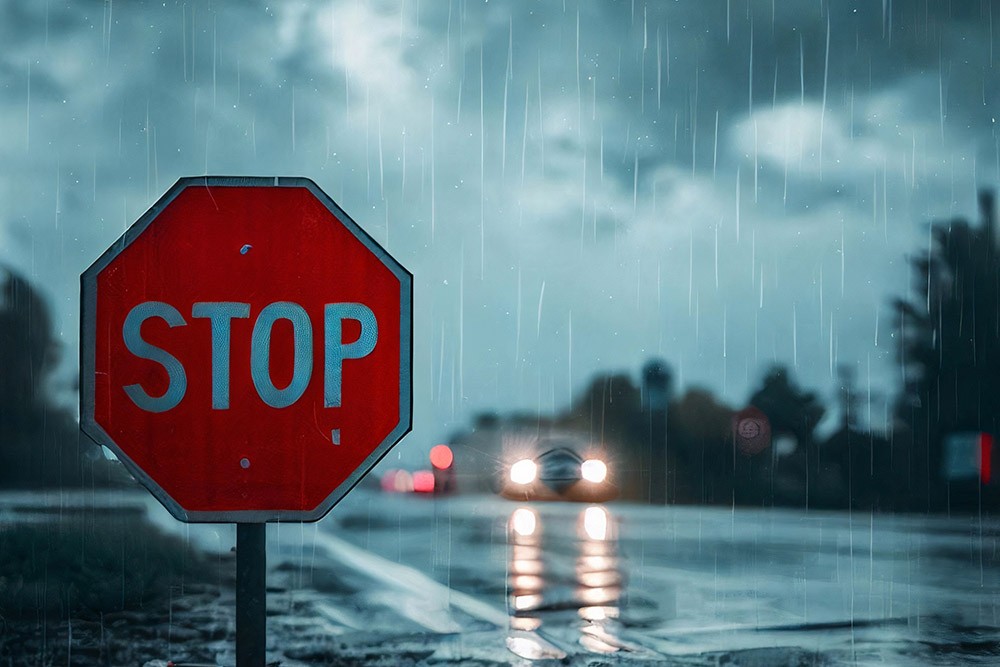Summer Heat Leads To Autumn Brake Issues

Weather affects your vehicle’s brakes in different ways, including unusual noises and poor responsiveness that can put you and your family at risk of accidents.
While summer heat can damage brake components, drivers who live in regions with snow can experience different problems. Snow can cake in wheel wells and cause grinding or squealing noises, which means an expert inspection should be done as soon as possible.
Reduced stopping power–taking longer than usual to bring the vehicle to a full stop–is another sign that your brakes need attention.
Drivers should check with their service advisor if, when they apply pressure to the brake pedal, it feels soft or the vehicle pulls to the side. This may indicate wear in the braking system.
“A vibrating brake pedal is also a sign to call your service advisor,” said Tony Molla, vice president of the Automotive Service Association, a Texas-based nonprofit devoted to vehicle maintenance.
“You don’t have to wait until your brake icon comes on. A routine inspection before winter roots out potential problems.”
Sometimes, the brake light may display if there is a problem with the anti-lock braking system. The ABS light can indicate an issue with a wheel speed sensor or wiring, which may cause a malfunction during an abrupt stop. In any case, an inspection is necessary to restore full braking effectiveness.
Check out these tips to keep your brakes in good working condition during upcoming months:
1. Replace worn brake pads after summer driving to prevent autumn issues.
Check for pad wear, leaks, and a worn or scratched brake disc. Don’t wait for squeals to turn into grinding noises which can damage rotors, a much more costly repair.
2. Use quality parts to provide better wear and grip.
Be sure replacement brake pads meet or exceed the manufacturer’s recommendations. The quality of pads vary depending on their composite materials – metal fibers, rubber compounds, silicate and resins.
3. Check brake fluid and brake lines.
Manufacturers recommend brake fluid be replaced every so often (see owner’s manual for specific requirements for your vehicle). Summer driving can cause leaking or damaged lines. Friction and heat can contaminate brake fluid as well as wear unevenly on brake parts.
4. Do not ignore brake system warning lights.
Left unaddressed, a minor problem can become a major repair or a safety issue. Perhaps the problem is as simple as adding brake fluid or replacing brake pads. Other issues involve the vehicle’s ABS system.
5. Get a brake inspection before you leave town on your next adventure.
If you are planning an autumn trip, especially if the destination involves mountain roads, make sure your vehicle can handle the stress and strain of frequent stops and braking.
6. Do a test run if you plan to pull a trailer or fifth wheel.
Towing a trailer affects how your vehicle brake system performs under stress. Take your vehicle on a local drive and test brakes at different speeds. Take note of vibration, slow responsiveness and noises.
7. Check the emergency brake system.
Most people use their emergency brake system when parking, yet it also functions as a backup to the primary brake system. Ask your service advisor to inspect it this autumn so it can perform properly for parking and emergencies.
8. Test all brake lights to make sure they are bright and working properly.
Brake lights are hard to notice when they go bad. Ask a friend to look while you press on the brake pedal. Burned out brake lights are a safety hazard to you and drivers around you.
Also, for vehicles using traditional rather than LED bulbs, brightness wanes considerably over time. Replace burned out bulbs immediately and consider replacing old bulbs that have faded.